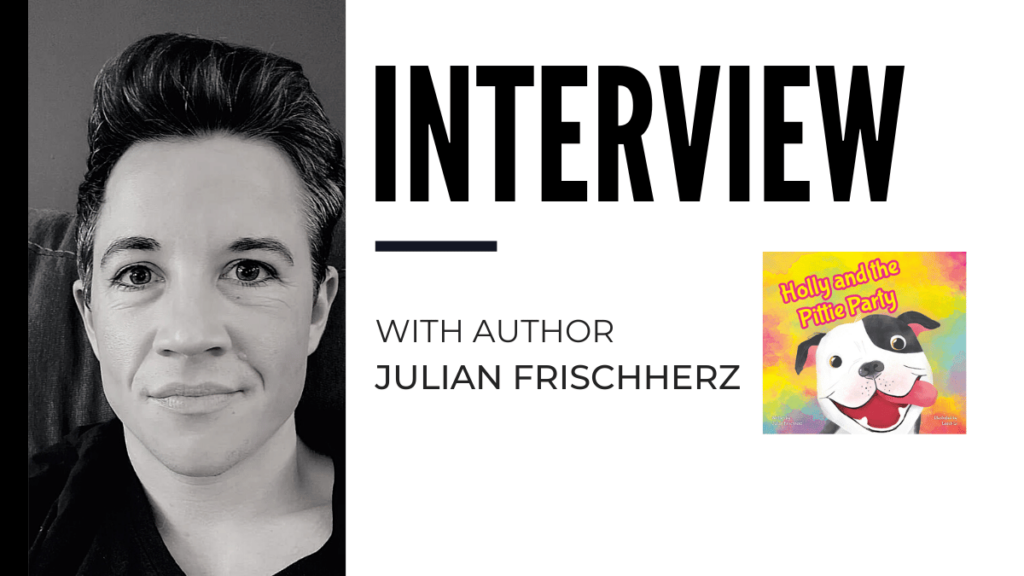An interview with Julian Frischherz in partnership* with The Children’s Book Review and Jolly Fish Press.
Julian Frischherz is based in Baltimore, Maryland, where pit bulls find themselves abandoned in shelters daily. He worked in domestic animal care for four years and wrote little stories for his four-legged clients’ human counterparts. He believes a walk is never just a walk if you have the imagination. Holly and the Pittie Party imagines a world in which all dog breeds are loved equally.
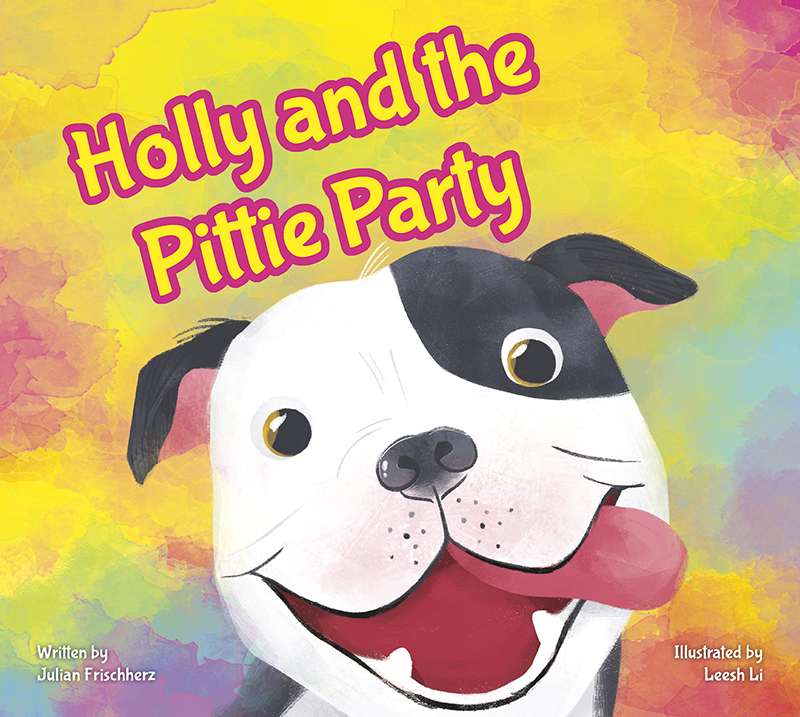
In this interview, Julian discusses the inspiration for his heartwarming picture book Holly and the Pittie Party, being an animal lover, addressing discrimination with kids while maintaining a sense of lightness and positivity, and imagining a world where all dog breeds are loved equally.
Bianca Schulze: Congratulations on your new picture book! Holly and the Pittie Party is a heartwarming tale that takes readers on an emotional and touching journey alongside lovable Holly, a pit bull whose family has unfortunately abandoned in the city. What or who inspired you to write this story?
Julian Frischherz: Part of my job as a dog walker was writing little notes for the owners about what the pups and I got up to during our walkabout. I always tried to keep these fun and interesting instead of the same old same. (A walk is never just a walk if you use your imagination). One day a client told me that she really enjoyed my “stories” about her dog Phoebe. She even suggested that I write a children’s book about dogs. That got me thinking…what to write about?
It didn’t take me long to realize that my girl Holly had a story that needed telling. Because it’s not just her story—it’s the story of so many pit bulls in our city. Judged by their “fierce” appearance, feared and abandoned. I wanted Holly’s happy ending to change the narrative for others like her.
Have you always been an animal lover and drawn to pit bulls specifically?
Oh yes, I have always been an animal lover ever since I can remember. When I was younger, my favorite toys to play with were stuffed animals, my favorite movies featured animals as the main characters, and the zoo was always my favorite field trip. Over the pandemic, my household went from two cats to two cats, one Holly, and two rabbits. (Don’t worry, they all coexist peacefully!).
Growing up outside of Baltimore, all I knew about pit bulls I got from the news. Needless to say, I had a very misinformed view of them. Not until I worked in animal care and got to actually meet pit bulls in person did I realize just how great a disservice they had been done. There is no other breed for me (no offense to all the other doggos out there). Don’t let that big ol’ head and jaws fool you. You are looking at the biggest and most sensitive goofball.
You are looking at someone’s emotional support pup. A full-time furry therapist and entertainer. If they get mad—it’s because they can’t squeeze in next to you on the couch. Pit bulls can pick up on exactly how you’re feeling and mirror it. If you’re sad, they’re sad. If you’re happy, they’re over the moon. (I think we should all be more like pit bulls).
Despite facing discrimination due to her breed, Holly remains incredibly positive and determined to find a loving forever home that will embrace her with open arms. What went into writing a story steeped in such a strong theme while keeping it beautifully kid-friendly?
To engage young readers, the story needed to feature relatable characters and situations that resonate with their own experiences. By connecting with the characters, children can better understand and empathize with Holly’s journey and her desire for acceptance. While the story addresses discrimination, it was important to strike a balance between the serious themes and maintaining a sense of lightness and positivity. I tried to do this by infusing moments of humor, playfulness, and heartwarming interactions between characters, keeping the tone uplifting and optimistic.
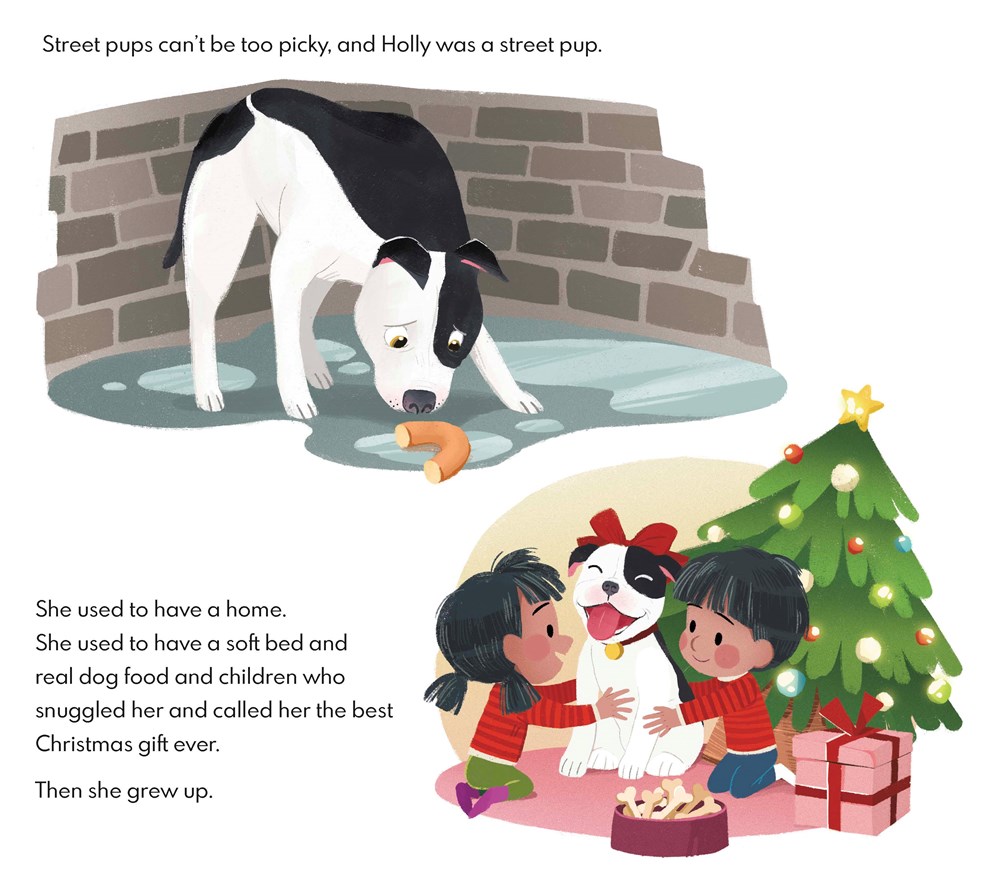
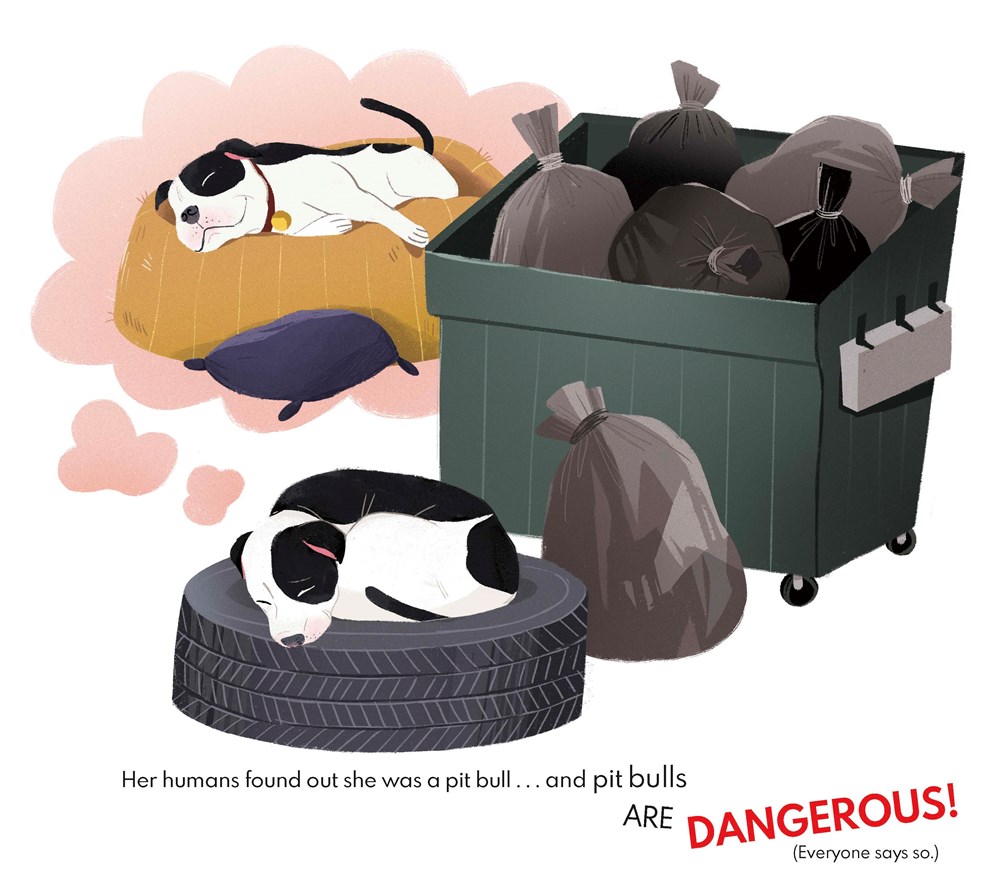
Illustrator Leesh Li has brought Holly’s vibrant and lively personality to life through the masterful use of vivid colors and mesmerizing artwork. How does the artwork make you feel?
Thanks to the brilliant artist Leesh Li, the illustrations played a significant role in conveying the story’s themes and maintaining a kid-friendly atmosphere. Visual cues, such as warm and inviting illustrations or expressions of joy and friendship, can help reinforce the positive and welcoming tone of the story. By embedding the themes of discrimination and acceptance in a narrative, the story can offer valuable lessons without feeling too heavy-handed. Children can learn and internalize important concepts through the characters’ experiences and the story’s resolution.
Holly and the Pittie Party imagines a world where all dog breeds are loved equally. I see a parallel to the need for equality across humanity. Am I reaching here? Or do you feel this story could be a conversation starter for any discrimination and prejudice?
The story of Holly and the Pittie Party, imagining a world where all dog breeds are loved equally, can indeed serve as a conversation starter for discussions about discrimination and prejudice in human society. While dogs and humans are distinct entities, narratives and allegories featuring animals have long been used to explore complex social issues.
In this case, the story’s concept of embracing all dog breeds equally can be analogous to promoting equality and acceptance among different human groups. By highlighting the value and worth of every breed, the story challenges the discriminatory tendencies that may arise from stereotypes, biases, or prejudices.
Using this story as a conversation starter could help people reflect on the ways in which discrimination and prejudice manifest in society. It can encourage discussions about the importance of embracing diversity, challenging preconceived notions, and recognizing the inherent worth of all individuals, regardless of their differences.
Do you have a favorite spread?
Oh gosh, not to be predictable, but my favorite moment is when Holly realizes she is going to the Pittie Party (not back out on the streets). I imagine that’s how my Holly felt when she got to her foster mom’s. The first instance of human kindness making a crack in that petrified shell. It just makes me so happy to think what a lonely dog would feel like going to a party. And not just any party, one where you find a new family!
While it is essential to acknowledge the differences between animals and humans, stories like Holly and the Pittie Party can provide a relatable context to explore broader issues of equality and fairness. They can foster empathy, understanding, and reflection, ultimately encouraging people to confront and address discrimination and prejudice in their own lives and communities.
Readers are likely to relate to Holly’s quest to find a sense of belonging—we all have the innate desire to belong. What do you hope young readers will take away from reading your book?
- Understanding the importance of acceptance: I hope my book can help young readers recognize the significance of accepting others for who they are, regardless of their differences or appearances. It promotes the idea that everyone deserves love, kindness, and a sense of belonging.
- Challenging stereotypes and prejudices: By following Holly’s journey, young readers may develop a critical mindset towards stereotypes and prejudices. They can learn to question preconceived notions and look beyond surface-level judgments to see the true value and worth of individuals.
- Embracing diversity: My hope is that this story will inspire young readers to appreciate and celebrate diversity. By showcasing different dog breeds and their unique qualities, the book encourages the acceptance of various perspectives, talents, and backgrounds in real-life human interactions.
- Empathy and kindness: Reading about Holly’s quest for belonging can foster empathy in young readers. They may develop a deeper understanding of what it feels like to be excluded or misunderstood, encouraging them to show kindness and compassion towards others.
- Self-acceptance: This story may also encourage young readers to reflect on their own sense of self-worth and acceptance. By witnessing Holly’s journey, they may learn the importance of embracing their own unique qualities and finding self-acceptance.
- Ultimately, the goal of “Holly and the Pittie Party” is to inspire young readers to think critically, foster empathy, embrace diversity, and promote acceptance in their own lives and communities.
About the Book

Holly and the Pittie Party
Written by Julian Frischherz
Illustrated by Leesh Li
Ages 4+ | 32 Pages
Publisher: Jolly Fish Press | ISBN-13: 9781631637049
Publisher’s Book Summary: After her family realizes the puppy they adopted is a pit bull, Holly finds herself abandoned in the city. To make matters worse, many people are unwilling to help her because of misconceptions about her breed. Holly’s search for love (and food) takes her through the city to a dog park, an animal shelter, and, finally, a fabulous pittie party. Against the backdrop of a culture not yet ready to accept all kinds of dogs, Holly learns that love and belonging are still possible.
Buy the Book
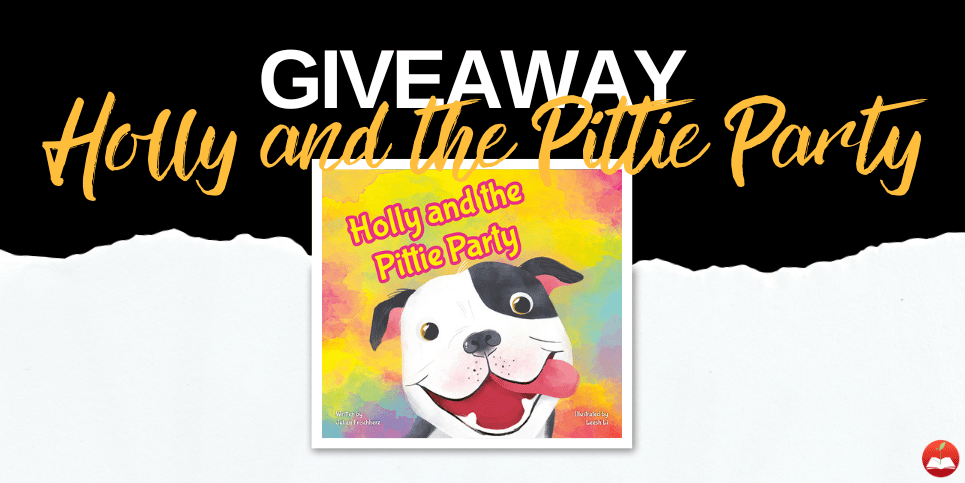
This interview—Julian Frischherz Discusses Holly and the Pittie Party—was conducted between Julian Frischherz and Bianca Schulze.

